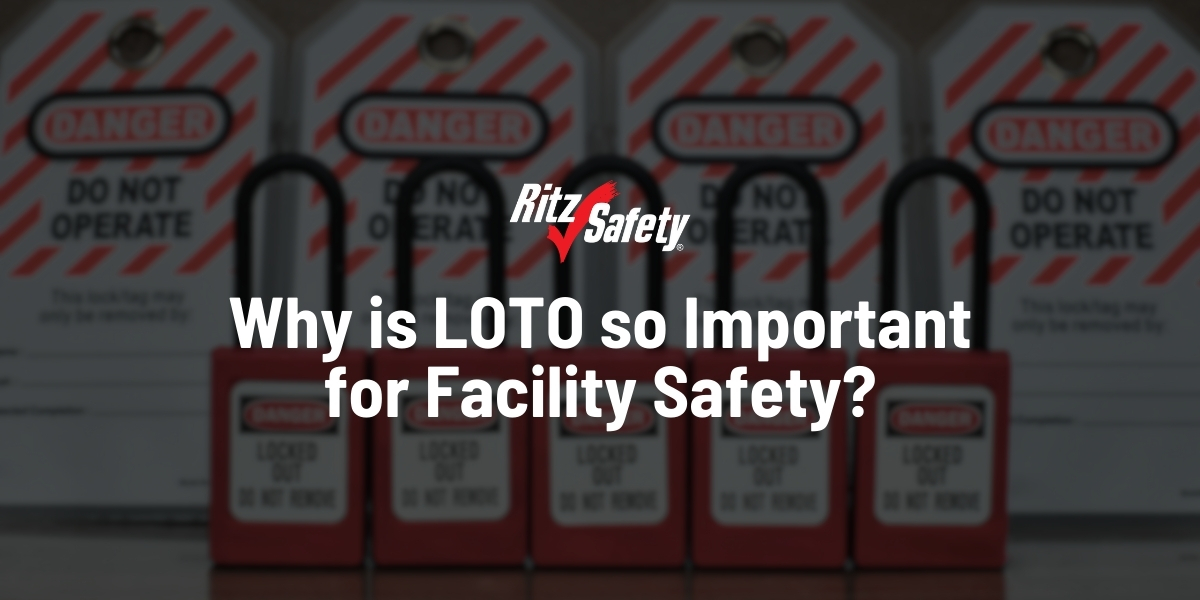
Why is LOTO so Important for Facility Safety?
In the ever-evolving landscape of industrial work, prioritizing safety is non-negotiable. One fundamental safety practice that stands out as a guardian against potential hazards is Lockout-Tagout (LOTO). This blog post delves into the essentials of LOTO, examining its significance, the types of hazardous energy it aims to control, its proven benefits, and practical tips for effective implementation.
What is LOTO?
Lockout-Tagout (LOTO) is a pivotal safety practice that ensures dangerous machines are properly shut off and cannot be started up again until maintenance or servicing is complete. A machine should be put on LOTO when it is emitting hazardous energy levels, when it requires maintenance before using, or when it is unsafe, until it has been serviced. According to OSHA, inadequate LOTO procedures rank among the most frequently cited violations, with failure to control hazardous energy being linked to numerous workplace fatalities.
This safety practice involves adding a visual lock and tag to energy isolation points, creating a barrier that prohibits usage and raising awareness among employees. Ensuring strict adherence to LOTO protocols substantially reduces the risk of accidents and improves overall workplace safety. In fact, a study by the National Safety Council (NSC) found that non-compliance with LOTO regulations significantly contributes to workplace fatalities. A startling 10% of all serious workplace accidents are attributed to the failure to control hazardous energy, leading to severe injuries such as amputations, electrocutions, and crush injuries. The financial impact of such accidents is staggering, with the Bureau of Labor Statistics (BLS) estimating that the direct costs of workplace injuries exceed $170 billion annually.
What Are the Types of Hazardous Energy?
Understanding the various forms of hazardous energy is crucial in implementing effective LOTO procedures:
- Mechanical: This includes moving parts such as springs and rotating arms.
- Magnetic: Some machines utilize magnetism, storing harmful energy in magnetic fields and capacitors.
- Electrical: Commonly used in industrial and non-industrial environments, this includes circuit breakers, motors, transformers, etc.
- Hydraulic: Fluid-based energy pressurized in pipes, cylinders, or tanks.
- Steam: Extremely hot and pressurized vaporized liquid.
- Chemical: Energy derived from chemical reactions.
- Radiation: Produced from nuclear sources or charged particle acceleration.
Why is LOTO Important?
LOTO goes beyond mere regulatory compliance; it is a lifeline for employee safety and overall workplace well-being. It serves as a shield against unexpected start-ups and releases of hazardous energy, ensuring that machinery is operated only when clear of servicing personnel. Compliance with proper LOTO procedures, according to OSHA, prevents an estimated 120 fatalities and 50,000 injuries annually in the United States.
The National Safety Council (NSC) reports that implementing effective LOTO programs can result in a significant return on investment, with businesses saving an average of $250,000 in direct and indirect costs for each prevented injury. Moreover, LOTO procedures significantly enhance employee safety by ensuring that machinery and equipment are properly de-energized and isolated during maintenance activities, preventing accidental startups and reducing the risk of serious injuries or fatalities. Without LOTO, employees may forget or simply ignore warning and try to use or go near the equipment when it is out of operation, which may result in severe injuries to themselves and others. Putting the machine or equipment on LOTO can prevent these accidents from happening.
Furthermore, LOTO not only safeguards employees but also contributes to improved workplace productivity by streamlining maintenance processes. With clear procedures in place, workers can confidently perform maintenance tasks knowing that the equipment is safely shut down, ultimately reducing downtime and enhancing overall operational efficiency.
Tips on Implementing Effective LOTO Procedures
Implementing LOTO is a systematic process that involves several critical steps. Begin with thorough preparation, notifying employees of needed servicing and understanding the risks involved. Follow these steps to ensure you follow the LOTO procedure correctly and safely.
- Notify employees the machine is in need or servicing. Make sure they understand that it may not be operated or tuned on until it has been fully serviced and restored.
- An authorized and trained service person should then identify possible energy hazard types and plan how to contain that energy.
- If the equipment is still running at this step, bring it to a stop in a safe and orderly manner.
- Once it has been shut off, isolate and separate the machine or equipment from its energy source to prevent accidental restarting.
- Then place the equipment on LOTO using the correct tags and locks for the energy type to indicate that it’s not functional and should not be used.
- Relieve or dissipate any stored energy that may still be held in the machine or equipment. This may be in springs, capacitors, hydraulic systems, flywheels, and more. Some common methods used to release stored energy are blocking, repositioning, bleeding down, or grounding. Make sure to use the method most appropriate to the energy type.
- Ensure the area is clear or employees and the equipment is in isolation and then attempt to turn on the machine to verify that it’s fully disconnected from energy.
- If the machine doesn’t turn on, it has been properly prepared and is ready for service.
Looking for top-notch locks and tags for your facility?
Explore our comprehensive range of LOTO solutions designed to enhance workplace safety and streamline maintenance processes from trusted leaders in LOTO safety, ABUS and Master Lock. Or shop all LOTO devices!
Reach out to our experts today for help finding the locks you need to keep you and your team safe!